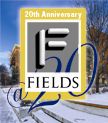| Upcoming
|
| Fridays 3: 15 |
Ongoing seminars
|
| Past Seminars |
Feb. 8
|
Nantel Bergeron and Mike Zabrocki
Algebraic Combinatorics working seminar at Fields
With Cesar Ceballos arriving (soon?) it might be a good occasion
to shift our problematic a little bit. I suggest to try finding a
natural polytopes that enumerate the non-commutative LR coefficient.
The immaculate tableau conditions and yamanouchi conditions are a
set of inequalities. Does this cut a nice polytopes? Is there better
polytopes to use (like Bereinstein-Zelevinsky-Knutson-Tao-Buch etc)
i.e. an weakening of the Hives model or Honeycomb or puzzle (whichever
is more appropriate). I remember reading long time ago a nice account
of many of those model in one paper... but I don't remember the author
(I thought Posnikov... but no). Anyway, we will start slowly as Cesar
is not here yet. So it is a good occasion to ask lots of questions.
|
| Feb. 1 |
Nantel Bergeron and Mike Zabrocki
Algebraic Combinatorics working seminar at Fields
We will conclude LR rule and start discussing were to go next. Cesar
Ceballos will arrive next week and it might be a good occasion to
shift our problematic a little bit. For example it might be a good
time to see if there are natural polytopes that enumerate the non-commutative
LR coefficient. The immaculate tableau coditions and yamanouchi conditions
are a set of inequalities. Does this cut a nice polytopes? Is there
better polytopes to use (like Zelevinsky-Fomin-Knutson-Tao etc).
|
| Jan. 18 |
Nantel Bergeron and Mike Zabrocki
The LR rule for Immaculate again!? and lets get back to noncommutative
Heisenberg algebra! |
| Dec. 14 |
Nantel Bergeron York University
How many time will I try to prove the LR rule for Immaculate? |
Nov. 30
at 3:40
|
Oded Yacobi
|
Nov. 23
|
Juana Sanchez-Ortega
Straightening relations on the immaculate basis
|
Nov. 9
|
Nantel Bergeron followed by Juana Sanchez-Ortega
Operators on Immaculate bases and noncommutative Littlewood-Richardson
Rule.
The ideas is to slowly work our way (this semester) to better understand
some subalgebra of the endomorphism of NSym At this point, we now
have a description (generators and relations) of the subspace spanned
by right-left multiplications and the dual operations (perp). Now
we which to study the subspace spanned by endomorphisms of "creation"
type (those are particular series in the operators above). The creation
operators define (Create) particular basis (Immaculate basis) of NSym.
To understand the relation among them, it seams we need to have the
analogue of Littlewood-Richardson rule for the Immaculate basis.
Nantel will recall some notions related to the immaculate basis and
then work his way to the LR rule. [That may take more then one session]
Juana will discuss the relation of the creation operators, and try to
use the LR-rule to give the answer a better form.
|
Nov. 2
3:40pm. |
The plan is to list the known commutation relations between the multiplication
operators in NSym and QSym and their duals.
|
| Oct. 26 |
Allen Knutson (Cornell University)
Combinatorial rules for branching to symmetric subgroups
Given a pair G>K of compact connected Lie groups, and a dominant
G-weightlambda, it is easy to use character theory to say how the
irrep V_lambda decomposes as a K-representation. If G = K x K, this
is tensor product decomposition, for which we have an enumerative
formula: the constituents can be counted as a number of Littelmann
paths or MV polytopes.
I'll give a positive formula in the more general case that K is a
symmetric subgroup of G, i.e., the (identity component of) the fixed-point
set of an involution. The combinatorics is controlled by the poset
of K-orbits on the flag manifold G/B, which reduces to the Bruhat
order in the case G = K x K. I can prove this formula in the asymptotic
(or, symplectic) situation replacing lambda by a large multiple, and
nonasymptotically for certain pairs (G,K).
This is a joint meeting with the Geometric Representation Theory
Seminar
|
| Oct. 12 |
Oded Yacobi (U of Toronto)
The Categorification of the Heisenberg algebra |
| Oct. 5 |
Mike Zabrocki
Operators on Immaculate bases of QSym and NSym |
| Sept. 28 |
Nantel Bergeron (York University)
An introduction to QSym and NSym II
|
| Sept. 21 |
Nantel Bergeron (York University)
An introduction to QSym and NSym I
The ideas is to slowly work our way (this semester) to better understand
some subalgebra of the endomorphism of QSym in ways similar to the
way the Heisenberg algebra is understood as a subalgebra of the endomorphism
of Sym.
|

